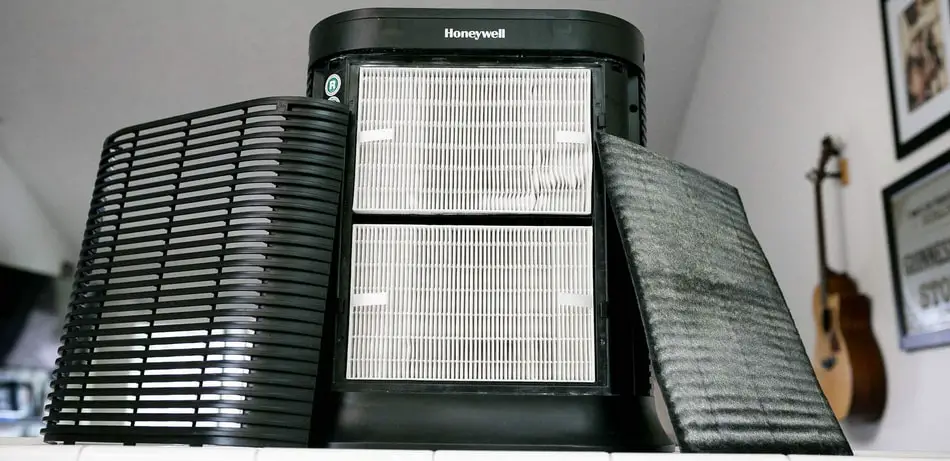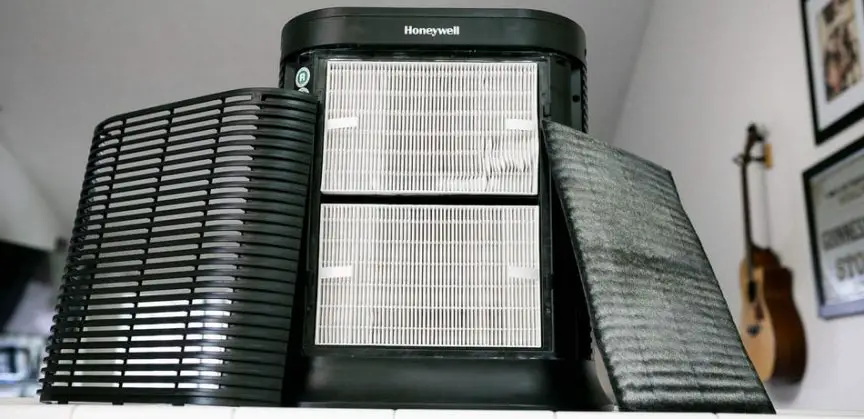
Air purifiers are generally easy devices to operate but sometimes they can leave you unsure of whether they are doing anything at all after you have turned them on. If you find yourself wondering if an air purifier in your home is working, there are several things you can do to check.
In short, how can you tell if an air purifier is working? To determine if an air purifier is working, either physical examinations or air quality tests can be conducted. Physical examinations vary across different types of air purifier while the same types of air quality tests can be applied across all devices.
I found with regards to physical examinations, that you can either physically inspect your device or alternatively run some air quality tests in the room where your device is placed. As for air quality tests, you can either use electronic and digital tests or chemical air quality test kits.
I will start by explaining the physical ways to tell if your air purifier is working or not then I will show you the air quality test. Together, these checking mechanisms make up four separate categories.
1. Physical Checks You Can Do On You Air Purifier to Check If It’s Working
The physical checks you can do to tell whether your air purifier is working will vary depending on whether you have a filterless or filter air purifier (I explain the difference between these two technologies here). The physical tests then vary even further between the different types of filterless purifiers you will find.
For instance, if you have an ionic air purifier, under normal operation your air purifier collects fluff and dust on its metal rods that produce ions to clean the air. So to check if this device is working, every week you will have to check whether it has accumulated dust on its ionizing rods. If there is no fluff or dust then your device is not working.
Some ionizers also have some type of pollutant collector compartment. You normally find pollutants collected in this part of the device every week. However, if the device has been running for a week and you find nothing, then you know it’s not working.
The other type of filterless purifier is a photocatalytic oxidation (PCO air purifier). It is harder to physically examine if this type of air purifier is working as it does not collect any pollutants but it rather burns and destroys air contaminants that are exposed to its reaction chamber and turns them in carbon dioxide and water vapor.
Your best bet in physically examining whether a PCO air purifier is working is to check its airflow. Like HEPA air purifiers, PCO purifiers operate using a fan to suck air in and out of the device. If you find that no air is being released out of your device then there must be a problem somewhere.
You can simply check airflow by putting the back of your palm or your face where your device lets air come out and feeling if there is a breeze. I call this the breeze test. You can also apply the breeze test to filter air purifiers as they all operate by pulling and pushing air using in and out of their filter using a fan.
The only type of HEPA air purifier I recommend is one with a true HEPA filter. Unlike PCO air purifiers, you can do an additional check on HEPA purifiers, by checking your filter to see if it has trapped anything or if it is too clogged up. Once your filter is full, your device will stop working properly and you will notice its airflow is not as strong when you do the breeze test.
For all types of air purifiers that use fans, by far the craziest physical test I have seen to check if they are working is the fart test. Basically, you fart into the device and watch if it will go into overdrive mode. The caveat here is that this test only works if your device has multiple operating speeds and it can automatically change between the different speed settings based on your home’s changing air quality.
Here is a video example of the fart test
If your device has an air sensor and does not detect your farts, either you fart fresh air or there might be a problem with your device. That said I would suggest doing other tests before concluding on the fart test.
2. Physical Checks You Can Do On Your Air To Determine if Your Purifier Is Working
The next way you can tell your air purifier is working or not is by physically observing if the air in your room is better. This is largely based on intuition and you will find the approach is very subjective. However, if your air purifiers says that it gets rid of funny animal smells within a day and you are still getting animal smells a week down the line, then the device is clearly not working properly.
People respond differently to different levels of air quality but, after a few days of running an air purifier consistently, you should find your air becomes less stale and stuffy. You should also start to breath more easily, with fewer sinuses, congestion, and allergic reactions.
Air purifiers are supposed to give you a noticeable and sustained improvement in your respiratory health and cleanliness of the air in your home. If you are not feeling or seeing any noticeable difference after a week of running your air purifier, your alarm bells should go off and you can start doing further investigations on whether your device is working or not.
3. Chemical Tests Kits You Can Use To Tell If Your Air Purifier Is Working
When you decide to do further and more serious investigation on whether your air purifier is working, chemical air quality test kits are a good starting point. Using air quality test kits you can test for mold and mildew, volatile organic compounds and biological contaminants like dander and pollen in your indoor air.
The way you would use these tests is by turning off your air purifier and after an hour or two conduct the test as instructed on your test kit. Record your results and then turn on your purifier. After 24 hours, as your purifier is operating, run a second test.
If the results are the same or worse than when your air purifier was off, then you know you have a problem with your air purifier and its not working. When running this type of test, my big assumption is that you have a purifier that operates 24/7.
4. Digital and Electronic Air Quality Tests That Can Show You If Your Air Purifier Is Working
The next level and probably by far the best way to check if your air purifier is working is to go digital. There are so many options ranging from basic LCD particulate counters to more advanced WiFi enabled air quality detectors with a display that gives you a real-time comparison of your outdoor and indoor air quality.
Digital air quality monitors can detect almost any type of pollutant in your air. In addition to automated indicators that most purifiers now come with, you can also get air purifiers that come with built-in air quality monitors. The best I have seen of digital air quality monitors are ones that link up with an app on your phone or on a browser, allowing you to monitor your air quality at home remotely.
With all this functionality, you get live data that lets you know almost instantly when your air purifier is not working. With digital air quality monitors, you can run tests in a similar way as I described for chemical test kits to compare air quality when your device is on and of. However with digital air quality monitors if your monitoring device displays the same air quality levels when you are and are not operating your purifier then you know for sure your air purifier is not doing anything.
So these are the 4 main ways you can tell if your air purifier is working or not. For more info, check out my thoughts on which air quality monitoring device and air quality testing gear to get to help you determine if your air purifier is working. If you find your device is not working, sometimes it could just mean its time to replace your filter or your room is too big for your air purifier to cover.
If you have a new device and it fails these tests within a week of use, take it straight back to the store you got it from. A good device will have some kind of warranty or money back guarantee.
I hope, you found my info here useful. If you have other suggestions or questions on this topic please do share in the comments below and we can chat about it.

